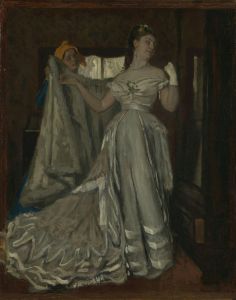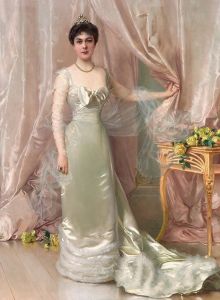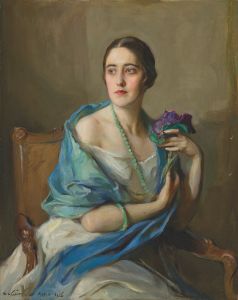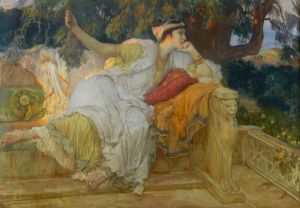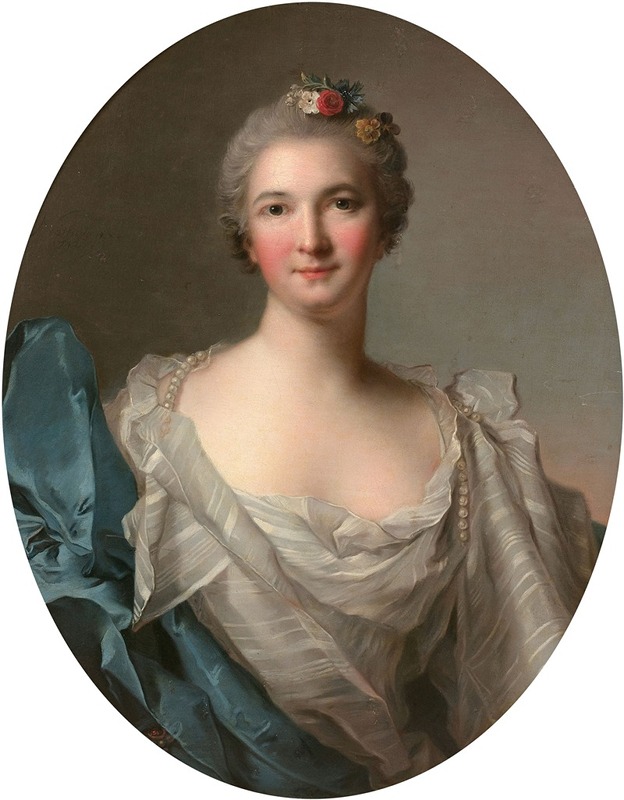
Portrait d’une dame de qualité à la robe blanche et au drapé bleu
A hand-painted replica of Jean-Marc Nattier’s masterpiece Portrait d’une dame de qualité à la robe blanche et au drapé bleu, meticulously crafted by professional artists to capture the true essence of the original. Each piece is created with museum-quality canvas and rare mineral pigments, carefully painted by experienced artists with delicate brushstrokes and rich, layered colors to perfectly recreate the texture of the original artwork. Unlike machine-printed reproductions, this hand-painted version brings the painting to life, infused with the artist’s emotions and skill in every stroke. Whether for personal collection or home decoration, it instantly elevates the artistic atmosphere of any space.
Jean-Marc Nattier was a prominent French Rococo painter known for his portraits of the aristocracy, particularly women, during the 18th century. One of his notable works is "Portrait d’une dame de qualité à la robe blanche et au drapé bleu," which translates to "Portrait of a Lady of Quality in a White Dress and Blue Drapery." This painting exemplifies Nattier's skill in capturing the elegance and refinement of his subjects, a hallmark of his artistic style.
Nattier was born in Paris on March 17, 1685, into a family of artists. His father, Marc Nattier, was a portrait painter, and his mother, Marie Courtois, was a miniaturist. Jean-Marc Nattier initially trained under his father and later studied at the Royal Academy of Painting and Sculpture. He gained early recognition for his work and was awarded the Prix de Rome in 1704, although he never traveled to Rome due to financial constraints.
Throughout his career, Nattier became renowned for his portraits of the French nobility, often depicting them in allegorical or mythological settings. His works were characterized by their delicate color palette, attention to detail, and the graceful portrayal of fabrics and textures. Nattier's ability to flatter his subjects while maintaining a sense of realism made him a favorite among the aristocracy.
The painting "Portrait d’une dame de qualité à la robe blanche et au drapé bleu" is a quintessential example of Nattier's portraiture. The subject is depicted wearing a sumptuous white dress, adorned with intricate lace and embroidery, which was typical of the fashion among the elite during that period. The blue drapery adds a touch of elegance and serves as a complementary contrast to the white attire, highlighting the sitter's refined status.
Nattier's portraits often included symbolic elements that conveyed the sitter's virtues or social standing. In this painting, the choice of colors and the luxurious fabrics may suggest the lady's wealth and sophistication. The serene expression and poised demeanor of the subject reflect the Rococo ideals of grace and beauty.
While specific details about the identity of the lady in this portrait are not widely documented, it is known that Nattier frequently painted members of the French court and other high-ranking individuals. His clientele included figures such as Madame de Pompadour, the mistress of King Louis XV, and other influential women of the time.
Nattier's work was highly regarded during his lifetime, and he enjoyed considerable success. However, his reputation declined after the French Revolution, as the Rococo style fell out of favor. It was not until the 19th and 20th centuries that his contributions to art were re-evaluated and appreciated once more.
Today, Jean-Marc Nattier's paintings are held in high esteem and can be found in major museums and collections around the world. "Portrait d’une dame de qualité à la robe blanche et au drapé bleu" remains a testament to his skill as a portraitist and his ability to capture the elegance and sophistication of the French aristocracy during the Rococo period.





